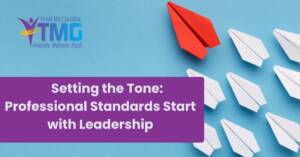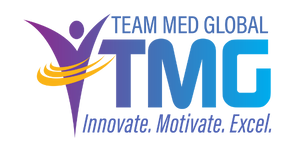
Setting the Tone: Professional Standards Start with Leadership
Healthcare organizations rely on Provider Lifecycle Professionals (PLPs) to keep essential processes running—credentialing, licensing, provider enrollment, and quality. These functions directly affect patient care, provider access, and organizational compliance. But technical accuracy isn’t the only standard that matters. Professionalism—how PLPs present themselves, communicate, and manage responsibilities—shapes how the field is perceived and how effectively teams operate.
When professionalism slips, the ripple effect is significant. Arriving late to meetings, failing to prepare, using phones during discussions, or responding to emails without closing the loop all create breakdowns. These behaviors erode trust, slow workflows, and weaken the department’s credibility.
So where do PLPs learn what “professional” looks like? The answer should be leadership.
Why Professional Gaps Exist
The unprofessional behaviors leaders often notice—poor communication, lack of preparation, unclear boundaries around work hours, or casual approaches to meetings—rarely come out of nowhere. They reflect bigger dynamics at play:
- An evolving workforce – Many PLPs enter the field through administrative or nontraditional routes. Without formal training pipelines, they may never have been taught professional norms specific to healthcare.
- Generational shifts – Younger staff may not have the same reference points for email etiquette, in-person conduct, or meeting dynamics as seasoned professionals.
- Remote and hybrid habits – Flexibility during the pandemic blurred lines for some around availability, dress, and workplace presence. Returning onsite requires recalibrating expectations.
- Leadership silence – When leaders don’t articulate expectations clearly—or model them consistently—staff fill in the gaps themselves.
Understanding these root causes helps leaders respond with more than frustration. It positions them to solve the problem.
Beyond Rules: What Leaders Can Do
Professional standards aren’t enforced only by policy. They’re shaped by culture. Leaders who want to raise the bar need to combine clarity, modeling, and accountability.
1. Model the behavior.
Professionalism is contagious. Leaders who arrive on time, respond fully to messages, and close communication loops send a stronger signal than any policy memo.
2. Clarify expectations.
Don’t assume staff “just know.” Spell out what professional communication looks like (email signatures, response timelines, looping in original senders), what’s expected in meetings (preparedness, attention, participation), and how overtime or schedule changes should be handled.
3. Coach in the moment.
Instead of waiting for annual reviews, leaders can give quick, respectful feedback right after issues occur: “Next time, please reply all so the original sender sees the resolution.” These micro-coaching moments prevent bad habits from sticking.
4. Build systems that reinforce professionalism.
Shared meeting agendas, standardized email templates, and collaborative project management tools can reduce errors and make it easier for staff to meet expectations.
5. Train and mentor intentionally.
Professionalism is a skill that can be taught. Incorporate expectations into onboarding, pair newer staff with seasoned mentors, and provide regular refreshers so norms stay consistent.
Professionalism Is Not Cosmetic
It’s tempting to treat professionalism as a matter of appearances—polished dress or punctuality. But for PLPs, the stakes are much higher. Professionalism directly influences:
- Patient safety – Prepared, detail-oriented staff reduce compliance risks.
- Provider trust – Clear, respectful communication builds confidence with medical staff.
- Organizational credibility – How PLPs show up reflects the seriousness of the entire health system.
In other words, professionalism isn’t “nice to have.” It’s a critical competency for the provider lifecycle.
Setting the Tone for the Field
The PLP profession is still evolving. How leaders define and enforce professional standards today will influence how the field is perceived tomorrow. Leaders who model professionalism, communicate expectations clearly, and mentor intentionally are doing more than managing a team. They’re setting the tone for the industry.
And in a healthcare environment where credibility and trust are everything, that tone matters.
Ready to strengthen your leadership skills and set a higher standard for your team?
Enroll in TMG University’s Certificate in Leadership Excellence to build the communication, accountability, and professional development strategies that every PLP leader needs.

